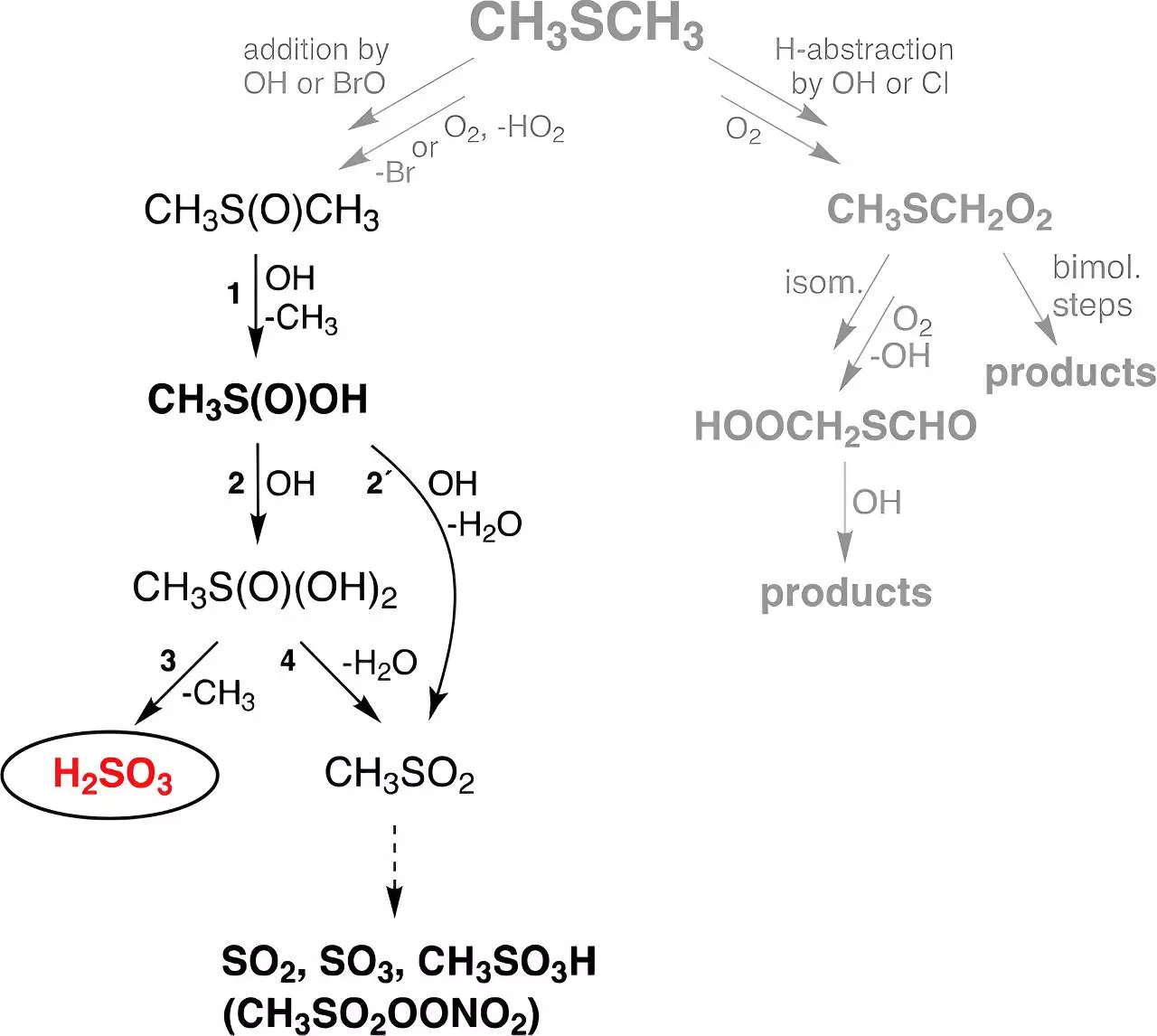The atmosphere, a complex and dynamic environment, continues to intrigue scientists with its myriad chemical reactions. Recent research from the Leibniz Institute for Tropospheric Research (TROPOS) in Leipzig has unveiled a groundbreaking finding: the discovery of sulfurous acid (H2SO3) in its gas phase under atmospheric conditions. Published in the prestigious journal Angewandte Chemie, this study challenges existing perceptions of sulfurous acid as a virtually unattainable compound. Traditionally, textbooks explained that H2SO3 could only form in aqueous solutions of sulfur dioxide (SO2), with its isolated existence deemed impossible. This groundbreaking research not only detects H2SO3 but also opens new avenues for understanding atmospheric processes.
Historically, the quest to detect sulfurous acid has faced numerous challenges. Prior research, including attempts made in aqueous SO2 solutions, have yielded inconclusive results, leading the scientific community to focus on related species like bisulfite (HSO3⁻) and sulfite (SO3²⁻). Helmut Schwarz’s team at Technische Universität Berlin (TU Berlin) was the first to report an experimental detection of H2SO3 in 1988 by generating it in a mass spectrometer, but this detection lasted for an extraordinarily brief moment — around ten microseconds. Consequently, a gap remained in understanding the full chemical makeup of our atmosphere, particularly concerning the role of biogenic sulfur sources.
Dimethyl sulfide (DMS) plays a pivotal role in the sulfur cycle within the atmosphere. This compound, primarily emanating from marine biological processes, contributes around 30 million tonnes of biogenic sulfur annually. The TROPOS researchers explored the potential gas-phase reactions involving DMS, particularly those with OH radicals — generated from ozone and water molecules under ultraviolet light conditions. By designing a series of laboratory experiments in flow reactors that mimic atmospheric conditions, they successfully demonstrated the formation of H2SO3. Remarkably, under these controlled conditions, sulfurous acid remained stable for up to half a minute, suggesting that it could exist long enough in the atmosphere to significantly affect atmospheric chemistry.
This breakthrough raises several compelling questions and implications. The stable existence of H2SO3 in the gas phase, as observed, contradicts its previously assumed ephemeral nature. Notably, the researchers discovered that the yield of H2SO3 formed was even greater than theoretical predictions suggested. This finding has profound implications for the understanding of the atmospheric sulfur cycle, opening pathways for further investigation.
Incorporating their experimental findings into a global chemistry-climate model indicated that nearly 8 million tonnes of sulfurous acid are produced globally each year. Impressively, this pathway generates approximately 200 times more mass of H2SO3 compared to the direct formation of sulfuric acid (H2SO4) from DMS. This discovery may significantly enhance our ability to model atmospheric behavior and its correlation with climate dynamics.
With the remarkable detection of H2SO3, researchers are now presented with a plethora of new questions. Notably, while the stability of H2SO3 in gas form is established, its reactivity — particularly with trace gases and water vapor in the atmosphere — remains poorly understood. Dr. Torsten Berndt emphasized the necessity for continued exploration to clarify these aspects, calling for more optimized experimental setups to unveil the full significance of H2SO3 and its interactions.
The capability to observe such elusive compounds has been greatly enhanced by advancements in detection methodologies. Utilizing a mass spectrometer with an exceptionally low detection limit allowed for the discernment of H2SO3 amidst a broader molecular landscape. This refinement in technology is crucial for probing complex chemical processes and adds a significant dimension to atmospheric chemistry research.
The research conducted by TROPOS marks a significant milestone in the field of atmospheric chemistry. The detection of sulfurous acid not only provides insights into atmospheric sulfur cycles but also exemplifies the ongoing evolution of detection techniques that deepen our understanding of chemical interactions in the atmosphere. As we continue to unravel the complexities of our atmosphere, the quest for knowledge remains at the forefront of scientific inquiry, promising intricate revelations yet to come.


Leave a Reply